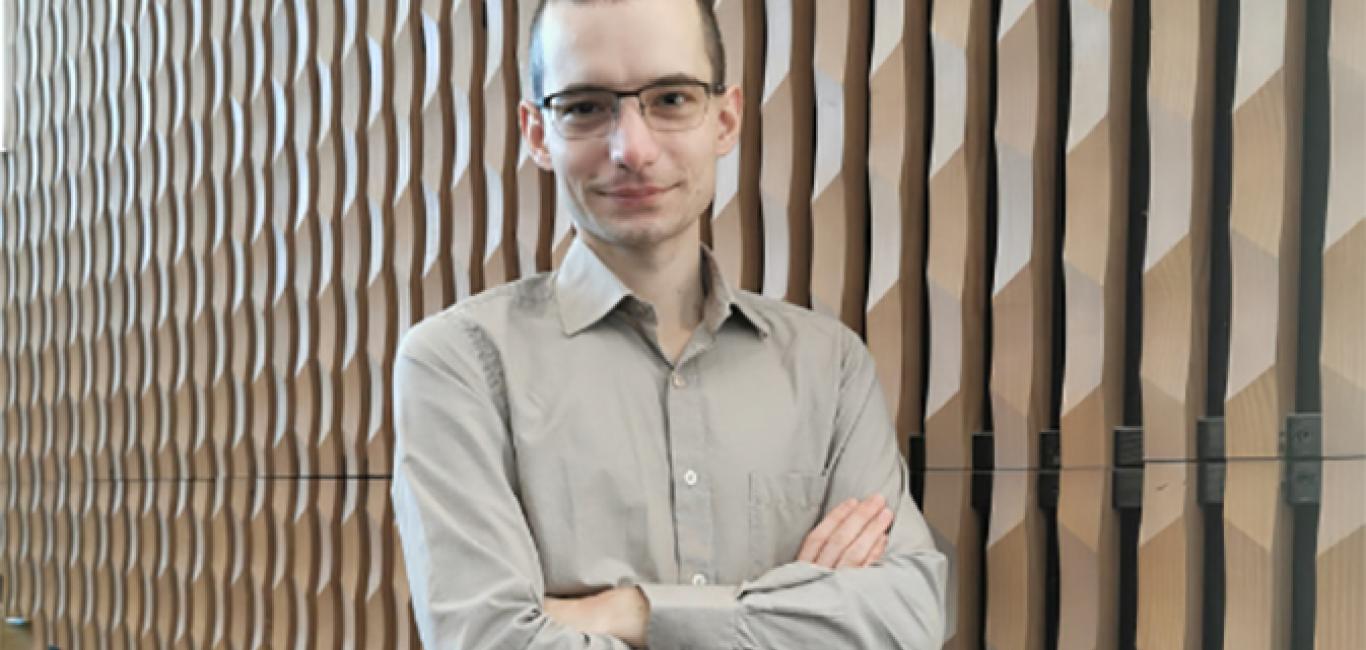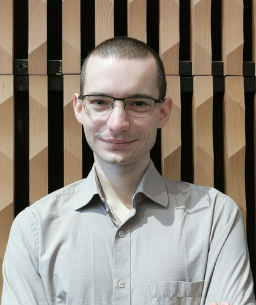
Petr DOBIAS
Petr Dobias, research professor at ESIEE-IT
The job of a research professor is creative. It allows us to carry out research and to pass on knowledge
Can you describe your journey, from your Baccalaureate?
Petr Dobias, research professor at ESIEE-IT :  After my baccalaureate, I took preparatory classes in PCSI (physics, chemistry, engineering sciences) and in PC* (physics, chemistry) at the Lycée Carnot in Dijon. I then joined the Ecole Nationale Supérieure des Sciences Appliquées et de Technologie (ENSSAT) in Lannion where I earned my engineering degree in electronics. I also did a double Master’s degree in SISEA Research (Signal, Image, Embedded and Automatic control) at ISTIC in Rennes. I continued my doctoral studies with a thesis I prepared within the CAIRN team of the IRISA laboratory (Research Institute of Computer Science and Random Systems) in Lannion. To do my research, I stayed at the PARC laboratory (Parallel and Reconfigurable Computing Lab) at the University of Auckland in New Zealand. After my thesis, I held a temporary teaching and research position at Sorbonne University, in Polytech Sorbonne, and I worked in the SYE (Electronic Systems) team of the LIP6 laboratory.
After my baccalaureate, I took preparatory classes in PCSI (physics, chemistry, engineering sciences) and in PC* (physics, chemistry) at the Lycée Carnot in Dijon. I then joined the Ecole Nationale Supérieure des Sciences Appliquées et de Technologie (ENSSAT) in Lannion where I earned my engineering degree in electronics. I also did a double Master’s degree in SISEA Research (Signal, Image, Embedded and Automatic control) at ISTIC in Rennes. I continued my doctoral studies with a thesis I prepared within the CAIRN team of the IRISA laboratory (Research Institute of Computer Science and Random Systems) in Lannion. To do my research, I stayed at the PARC laboratory (Parallel and Reconfigurable Computing Lab) at the University of Auckland in New Zealand. After my thesis, I held a temporary teaching and research position at Sorbonne University, in Polytech Sorbonne, and I worked in the SYE (Electronic Systems) team of the LIP6 laboratory.
Why did you choose the IT field?
IT is a constantly evolving field. As time goes by, we find solutions to problems identified in the past. At the same time, new difficulties emerge and need to be resolved soon. As I like computers and the challenges they pose, IT is one of my main areas of focus.
Why did you decide to become a research professor?
The job of a research professor is creative and allows us to carry out research and to pass on knowledge to students. I find this two-fold feature very interesting because I can focus on my field of research while monitoring the general state of the art. Thus, I offer courses taking new advances into account.
What subjects do you teach at ESIEE-IT and to which classes?
I teach engineering courses. I am responsible for the modules related to artificial intelligence: “Introduction to artificial intelligence”, “Machine learning” and “Deep learning”. I am also involved in other modules in IT and electronics. The courses I supervise are mainly dedicated to students at Bac+3 and Bac+4 levels.
What does your laboratory research consist of?
My research focusses on embedded systems. More specifically, I focus on the placement and scheduling of tasks or applications on such systems subjected to various constraints, such as real time, reliability or energy, while optimising an objective function.
In your opinion, what are the strengths of the ESIEE-IT school?
ESIEE-IT is a new school. It offers quality teaching using innovative technologies. As these technologies evolve rapidly, the school will keep up with this pace to offer up-to-date courses.
How does the ESIEE-IT engineering school stand out from the others?
ESIEE-IT offers several types of courses: engineering school programmes, Expert by ESIEE-Tech programmes and The Coding Factory by ESIEE-Tech school. Thus, students have a wide range of options to choose their pathway.
Petr Dobias: his digital Chinese portrait
If you were an app, you would be...?
Maps.Me
If you were an operating system, you would be...?
Unix
If you were a social network, you would be...?
If you were a #hashtag, you would be...?
#ResearchProfessor
If you were a digital technology or innovation, you would be...?
Von Neumann machine

